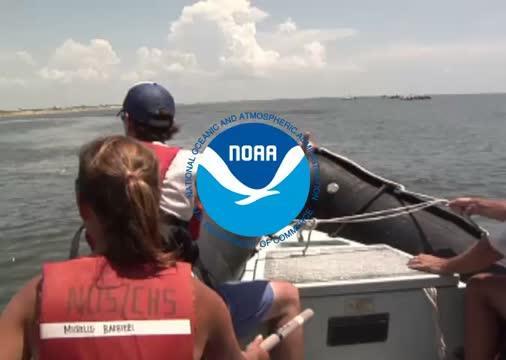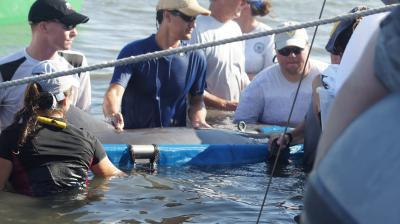The NRDA researchers found that moderate to severe lung disease was five times more likely in the Barataria Bay dolphins, with symptoms including lung masses and consolidation. The researchers also found that 25 percent of the Barataria Bay dolphins were significantly underweight and the population overall had very low levels of adrenal hormones, which are critical for responding to stress.
The researchers examined alternative hypotheses for the dolphins' disease conditions, such as exposure to other man-made chemicals that have previously been measured in high concentrations in marine mammals and also associated with impacts on health. Blubber samples from the Barataria Bay dolphins, however, showed relatively low concentrations for the broad suite of chemicals measured, including PCBs and commonly detected persistent pesticides, as compared to other coastal dolphin populations.
Based on the findings from the 2011 dolphin health study, researchers performed three additional health assessments in 2013 as part of the Deepwater Horizon NRDA. The studies were repeated in Barataria Bay and Sarasota Bay, and also expanded to Mississippi Sound, including both Mississippi and Alabama waters. Results from these more recent health assessments are still pending.
Researchers conducting the NRDA studies are collaborating closely with the team conducting an Unusual Mortality Event (UME) investigation in the northern Gulf of Mexico under the Marine Mammal Protection Act. Investigations of this type follow stranding events that are unexpected, involve a significant die-off and demand an immediate response. The observed increase in the number of dolphin strandings now includes more than 1,050 animals that have stranded along the Gulf Coast from the Texas/Louisiana border through Franklin County, Florida. Ninety-four percent of these animals have stranded dead.
This work was part of the Deepwater Horizon NRDA being conducted cooperatively among NOAA, other Federal and State Trustees, and BP.
Funding for the study was provided by BP and NOAA has shared the data with BP, and they had observers present at the health assessments. They were not, however, involved in any way in the analysis and interpretation of the data nor in the drafting of the paper.
The UME investigation, spanning from February 2010 to present, is the longest UME response since 1992, and includes the greatest number of stranded dolphins in an UME in the Gulf of Mexico. Dr. Teresa Rowles, lead for the Marine Mammal Health and Stranding Response Program and a co-author on the dolphin health publication, indicates that "these dolphin health studies will contribute significant information for both the NRDA and the UME investigation as we compare disease findings in the wild, living dolphins to the pathologies and analyses from the dead animals across the northern Gulf."

Video shows 2011 Deepwater Horizon Oil Spill Natural Resource Damage Assessment Marine Mammal research team conducting capture and release physical health assessments of dolphins that were exposed to oil in Louisiana's Barataria Bay from the BP Deepwater Horizon oil spill that begane April 20, 2010.
(Photo Credit: NOAA)

Scientist from the on-going Deepwater Horizon / BP Oil Spill Natural Resource Damage Assessment (NRDA) conduct capture and release health assessments of live wild dolphins in Louisiana's Barataria Bay in August, 2011 to determine impacts of spill on the top of the food chain marine mammals
(Photo Credit: NOAA)
Source: NOAA Headquarters